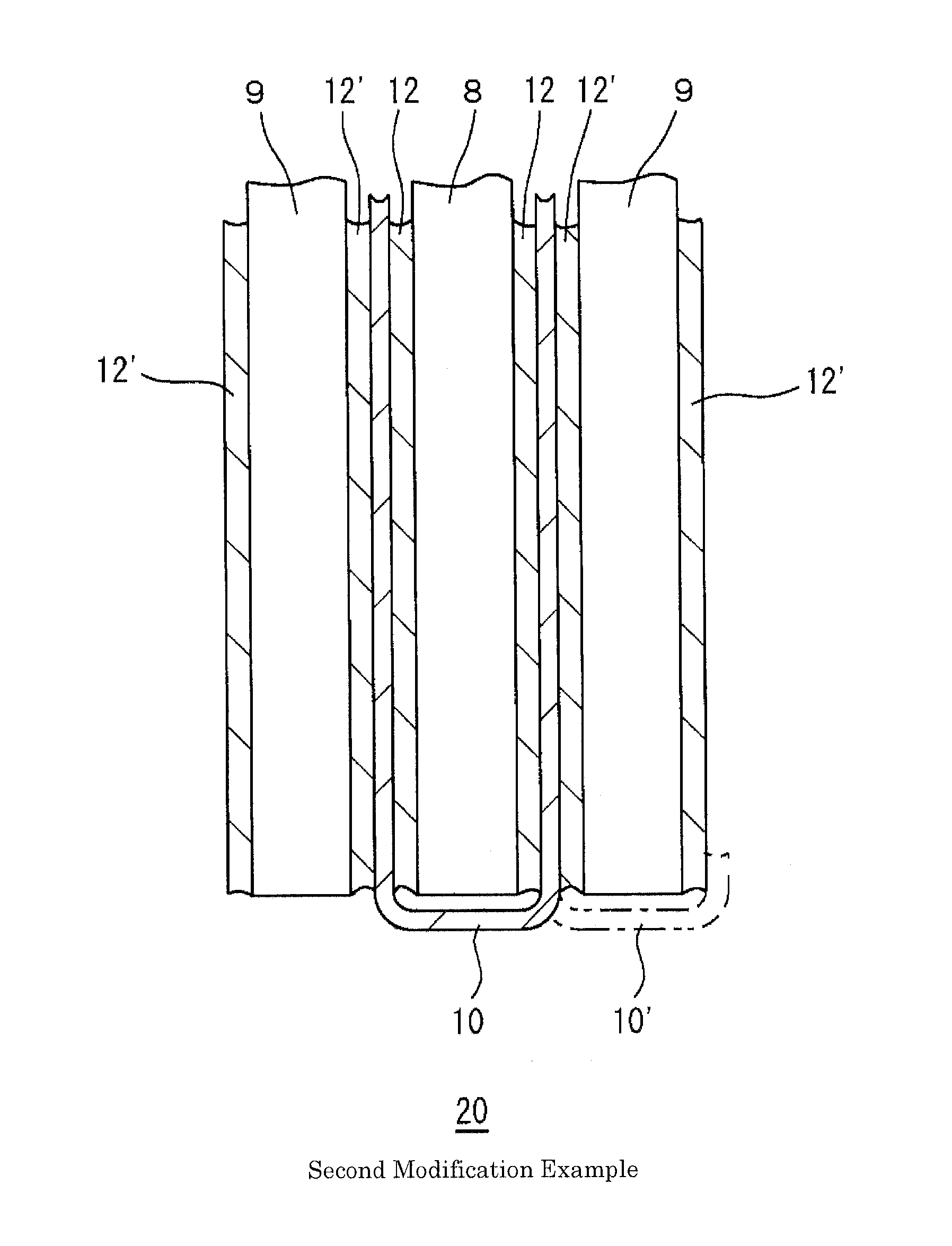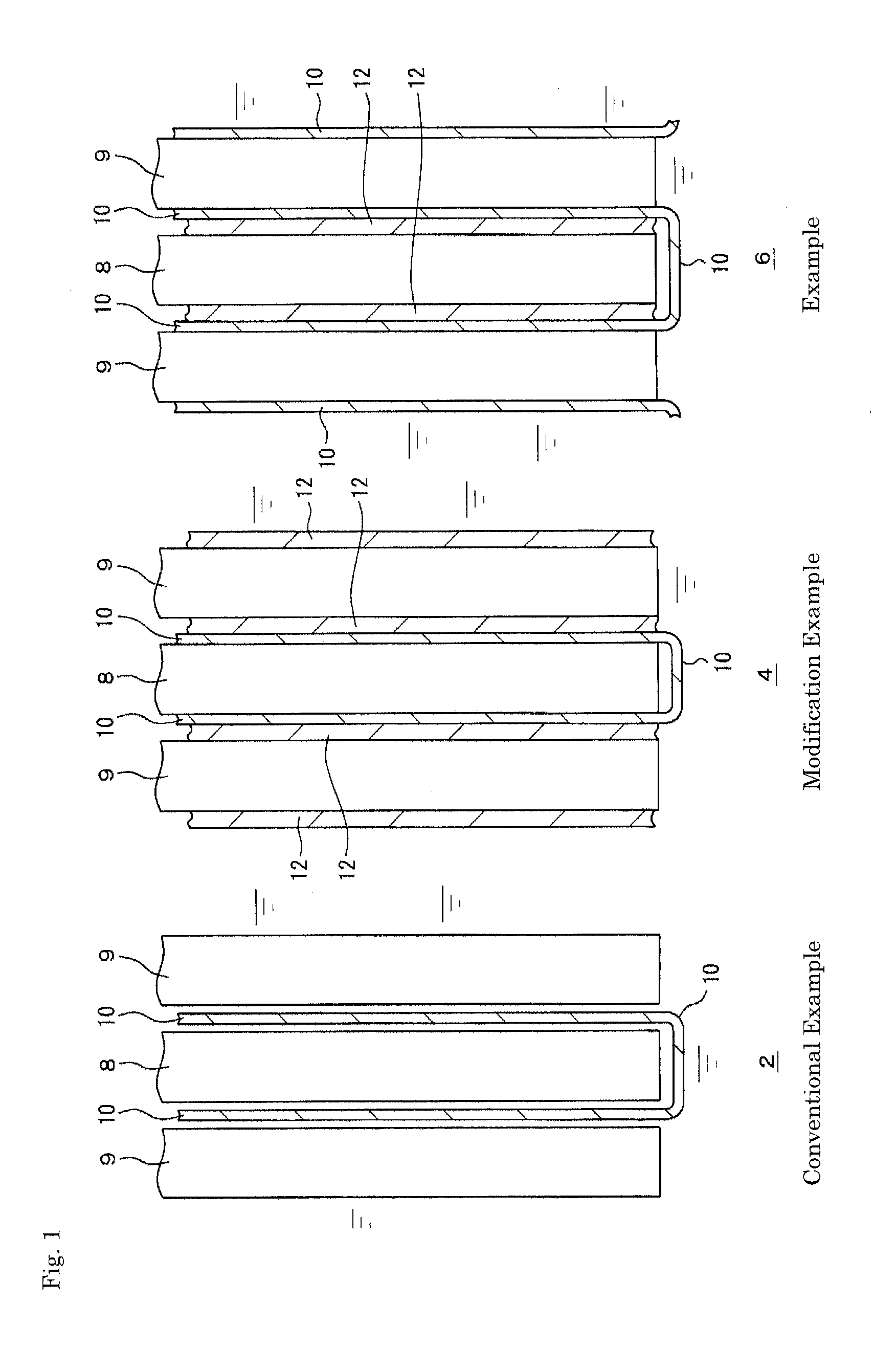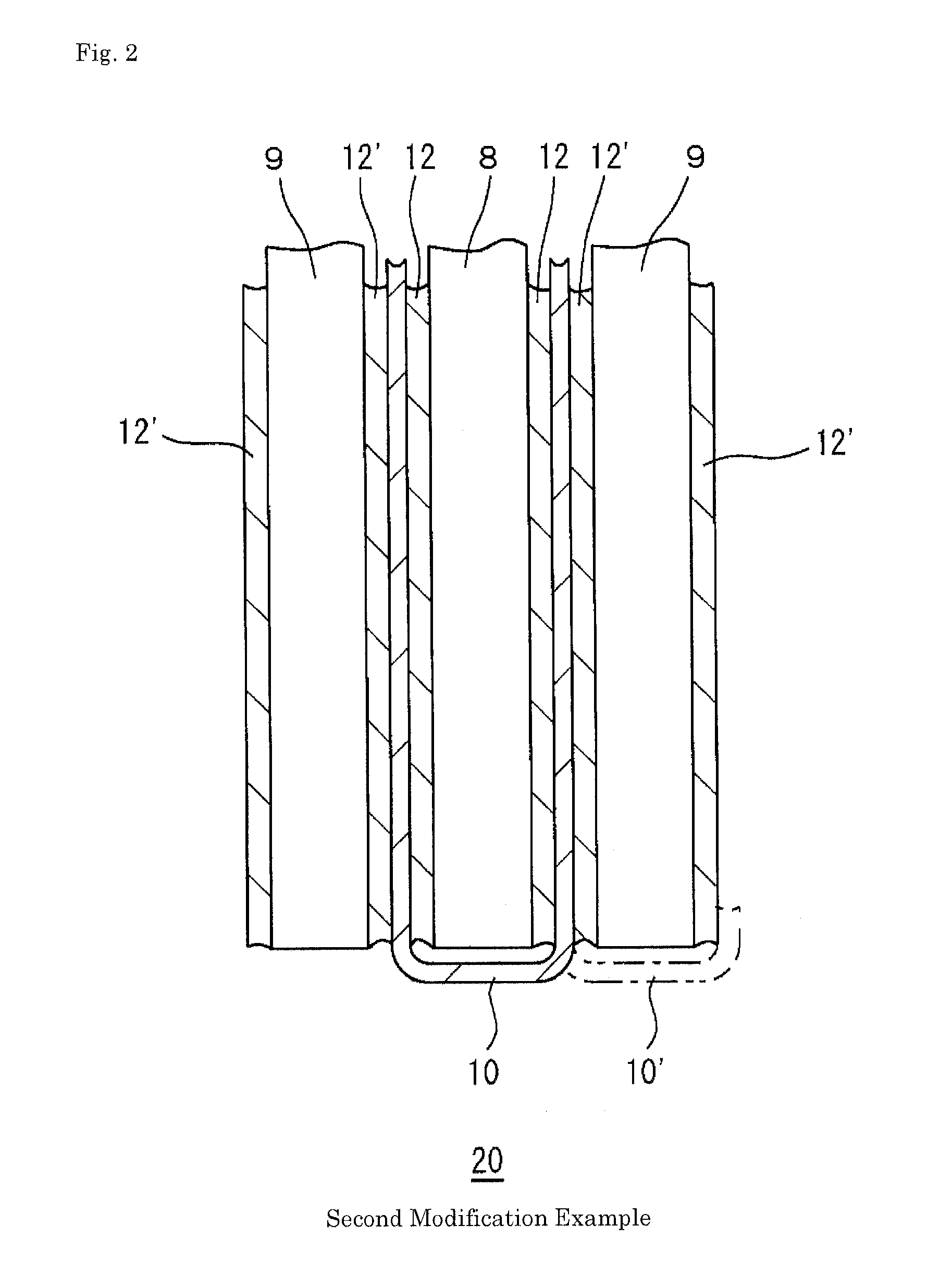Liquid lead storage battery and battery system
- Summary
- Abstract
- Description
- Claims
- Application Information
AI Technical Summary
Benefits of technology
Problems solved by technology
Method used
Image
Examples
example
[0023]FIG. 1 shows vertical sectional views of principal constitutional parts of liquid lead storage batteries in Example, Modification Example and Conventional Example, and Tables 1 and 2 show the performance of the liquid lead storage batteries. In FIG. 1, reference numerals 2, 4 and 6 denote principal constitutional parts of liquid lead storage batteries of Conventional Example, Modification Example and Example, respectively. Reference numeral 8 denotes a negative electrode plate, and reference numeral 9 denotes a positive electrode plate. The negative electrode includes an active material containing spongy lead and the positive electrode includes an active material containing lead dioxide with each electrode further including a general grid formed of a lead-calcium-tin-based or lead-calcium-based alloy. A method for production of each grid is arbitrary. The negative active material includes carbon; lignin, synthetic resin fibers, barium sulfate or the like; and a lead powder. Th...
second modification example
[0035]A principal constitutional part 20 of a liquid lead storage battery in second Modification Example is shown in FIG. 2, where the symbols identical to those in FIG. 1 denote the same components. An elastic sheet 12′ is also added between a microporous separator 10 and a positive electrode plate 9 with respect to optimum Example in FIG. 1. The additional elastic sheet 12′ abuts on the positive electrode plate 9 to prevent a positive active material from falling off the positive electrode plate 9. The additional elastic sheet 12′ prevents degradation of the microporous separator 10 by preventing deposits from the positive active material from coming into contact with the microporous separator 10 during charge-discharge. The microporous separator 10 may be changed as shown by a chain line 10′ in the figure to store the positive electrode plate 9 instead of storing the negative electrode plate 8.
[0036]A battery system of Example is shown in FIG. 3, where each arrow sh...
PUM
 Login to View More
Login to View More Abstract
Description
Claims
Application Information
 Login to View More
Login to View More - R&D
- Intellectual Property
- Life Sciences
- Materials
- Tech Scout
- Unparalleled Data Quality
- Higher Quality Content
- 60% Fewer Hallucinations
Browse by: Latest US Patents, China's latest patents, Technical Efficacy Thesaurus, Application Domain, Technology Topic, Popular Technical Reports.
© 2025 PatSnap. All rights reserved.Legal|Privacy policy|Modern Slavery Act Transparency Statement|Sitemap|About US| Contact US: help@patsnap.com



